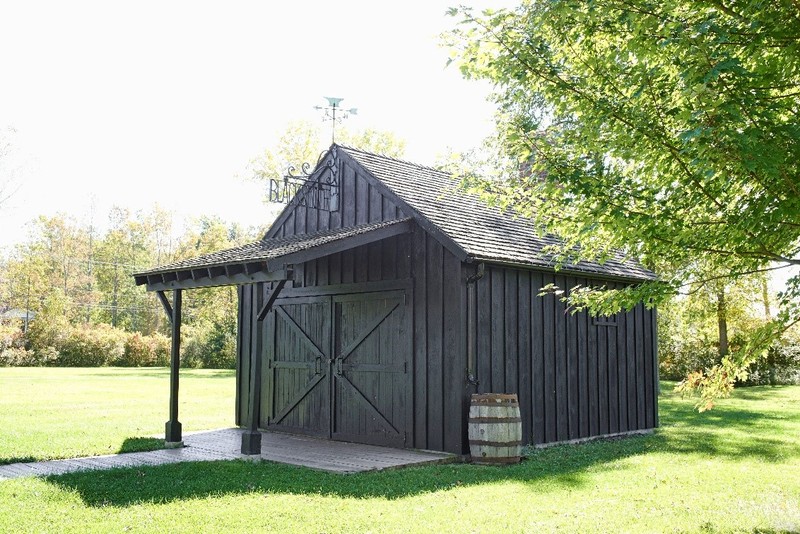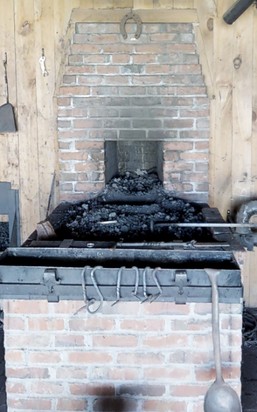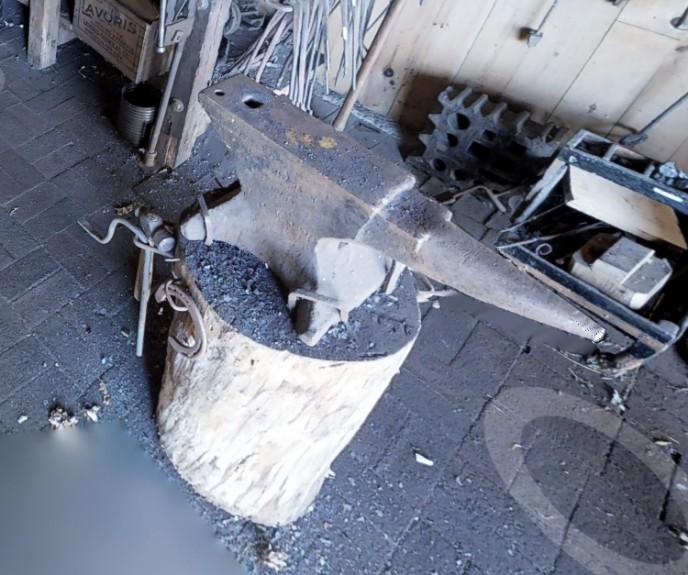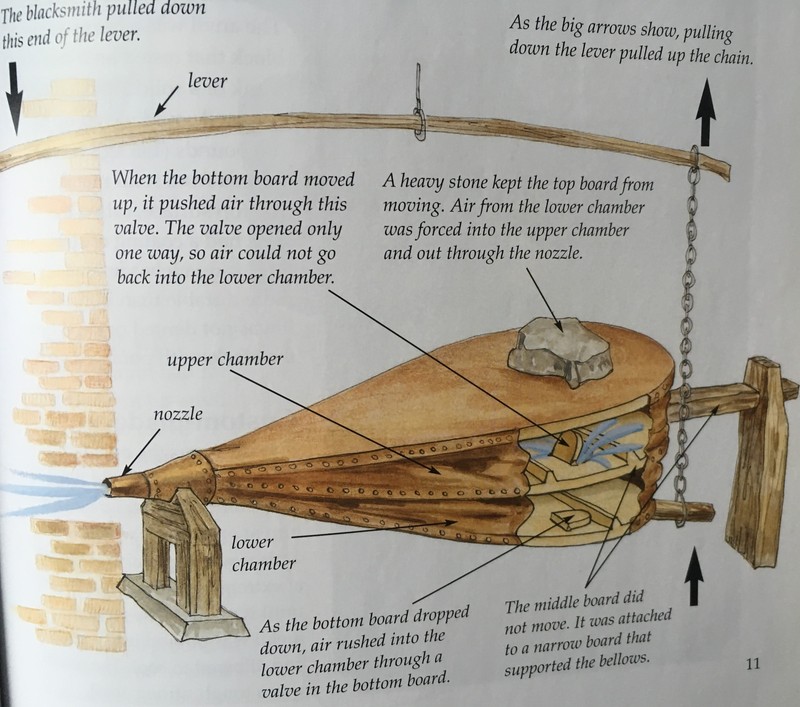Blacksmith Shop
Introduction
Text-to-speech Audio
Images
Blacksmith Shop

Forge

Anvil

Bellows

Backstory and Context
Text-to-speech Audio
Blacksmiths “smite”, or pound, iron. Iron is a Black metal that was very strong and durable. Therefore it was very valuable to early settlers. The Blacksmith may have shod horses for the local community and made and repaired tools, equipment (such as ploughshares) and household & farmstead items such as door handles, hooks, chains, etc.
The most important part of the Blacksmith shop was the forge. The forge is an open hearth, or fireplace, where the Blacksmith heats the iron. Air feeds the fire making it burn hotter. Blacksmiths use a huge bellows to heat the fire in the forge. As iron heats to higher temperatures, it first glows red, then orange, yellow, and finally white. The ideal heat for forging is when the iron turns a bright yellow-orange. Once this ideal temperature is reached, the Blacksmith removes the iron from the forge and places it on an anvil where he begins to shape the metal by hammering it. When the iron begins to cool, the Blacksmith will return it to the heat and repeat these processes until the piece is finished.
Blacksmiths often took on young boys as apprentices. The following duties might be the duties of the apprentice:
-Clean the forge
-Break up and haul charcoal for the day
-Sweep up and pick up the scraps of iron
-Start the fire in the forge
-Operate the bellows
Sources
Buffalo Niagara Heritage Village Docent Manual
Buffalo Niagara Heritage Village
Buffalo Niagara Heritage Village
Buffalo Niagara Heritage Village
Kalman, Bobbie; "Colonial People: The Blacksmith"; (Crabtree Publishing Company: New York, 2002)
